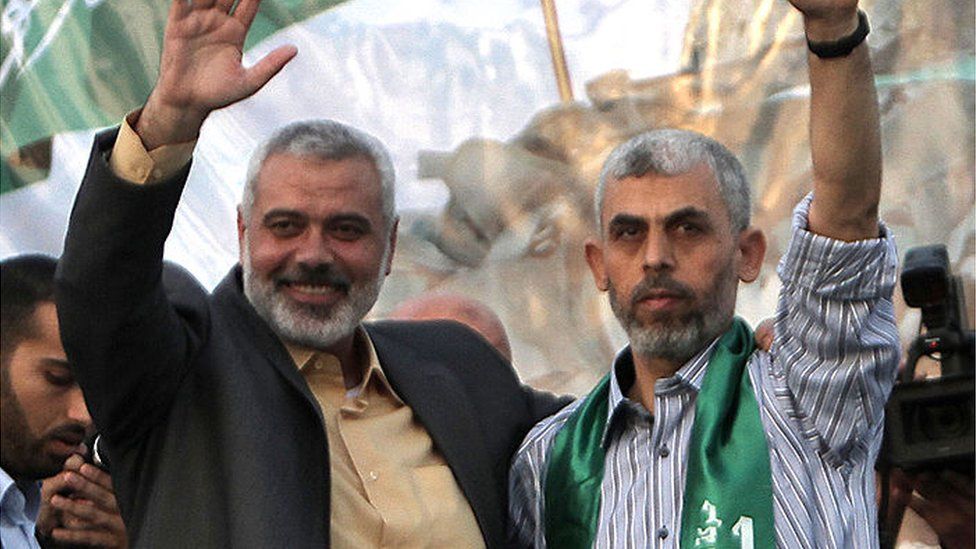Palestinians In Gaza Rain On Hamas’ Victory Parade
by Hugh Fitzgerald

The Palestinians in Gaza are held in thrall by their Hamas rulers. They cannot vote them out: there have been no elections in fifteen years. They cannot rise in revolt: political dissidents are swiftly arrested, imprisoned, and in some cases, killed by Hamas goons. They cannot prevent Hamas from putting its weapons in the midst of civilian areas, even inside schools, hospitals, mosques, apartment buildings, endangering the lives of ordinary people and, in fact, hoping thereby to increase the number of civilian casualties that can be used as propaganda against the IDF. Israel tries to minimize civilian casualties in Gaza; Hamas, on the other hand, hopes to maximize them. These ordinary Palestinians in Gaza, who are not privileged members of the terror group, have only one way to express their deep unhappiness, which is not to join in any public display of approval for Hamas. That widespread refusal to celebrate Hamas was much in evidence in Gaza on May 22, the day after the ceasefire was declared. That story is here: “Hamas Has Lost Its Gaza Constituency,” by Hillel Frisch, Algemeiner, May 31, 2021:
Never has Hamas faced a victory as shallow as the latest round of fighting it initiated with Israel, the evidence of which Hamas itself produced.
On the day after the ceasefire, Hamas Internet sites showed a four-minute video of Yahya Sinwar, the Hamas leader of Gaza, appearing in public for the first time since the fighting had begun 12 days before.
He was shown walking, accompanied by Hamas stalwarts, to victorious music amid festive banners. Loudspeakers blared his presence and the Hamas victory, and invited the public to join the festivities. The authorities had made sure to close the avenue in one direction and leave the other direction open. The traffic control, loudspeakers, and banners indicated that the event had been meticulously planned.
Everything had been prepared for a popular show of support for Hamas and its great “victory” over Israel. Yahya Sinwar himself, the leader of Hamas’ political wing, who had not been seen in public during the war, would be leading the marchers in the victory parade. Hamas banners fluttered in the air, loudspeakers blared their news about the great victory, one side of a main avenue had been closed off to vehicular traffic, for the sake of the pedestrians on parade. It was meant to be a stirring affair, a show of support for the brave fighters of Hamas who had dealt the Zionists such a terrific blow.
But it failed to materialize. No member of the public — not a single one — joined in. In the background, cars can be seen driving through and pedestrians walking about without anyone bothering to turn their gaze toward the event….
There are two basic reasons why Hamas is in total disconnect with its Gaza constituency (excepting the 50,000 families who form the hard core of Hamas and are in its employ as a result of Qatari largesse).
About 50,000 families – that is, about 300,000 people –out of Gaza’s population of two million, constitute the bedrock of Hamas members. But even these privileged people did not turn out to join the “victory parade,” or at least line the route to applaud Sinwar’s appearance.
Why didn’t the Gazans come out in any numbers?
First, Gaza’s residents know that Hamas deliberately operates from within the dense neighborhoods in which they live. Though the civilian population is rarely directly hit by the Israeli army, which does everything possible to prevent collateral civilian damage, the psychological toll of being used as a human shield is nevertheless considerable. Israel’s 6,500 strikes mostly involved missiles with a 500 to 750 kilo payload. Israelis now know that Hamas missiles with a payload one-twentieth of that have a nerve-racking impact that can be heard and felt over an area of four to five kilometers (16 to 24 square kilometers). A rocket strike from an Israeli plane with a payload 20 times that amount has a much greater impact, which means half of Gaza’s residents are affected by every strike. Those residents endured that effect 300 times over 12 days, 25 times a day — a level of punishment perhaps only fully understood by Israelis in the “Gaza envelope.”…
The shuddering thud made by the impact of Israeli bombs, that accompanied every one of its 6,500 airstrikes, must have driven the Gazans half-crazy, without letup, for eleven days. This is not something the Gazans can forget, nor can they forgive Hamas for starting this war that they know – whatever the Hamas big shots have been claiming – was a colossal defeat for the terror group that left much of Gaza in ruins. Ordinary Gazans are in despair.
This was no victory — a fact Gaza’s residents know well but cannot divulge.
All the preparations for the Victory Parade – the banners, the blaring loudspeakers, the half of the avenue closed off to vehicular traffic – were in place. So were a handful of Hamas fighters, escorting Sinwar. But there were no crowds lining the avenue. No swelling groups of loyalists marching behind Sinwar and his handful of Hamas officials and fighters. Hamas had apparently not called on its fighters to show up and march – or else. Possibly it believed its own propaganda, and thought that the people of Gaza would appear sua sponte. It didn’t happen. They failed to materialize. Some Gazans drove right by Sinwar and his pitiful cortege of bodyguards; pedestrians, too, hurried by, indifferent to – or most likely inwardly enraged by – the absurd spectacle of Hamas hailing its own “victory” when so much of Gaza had been pulverized.
First published in Jihad Watch.